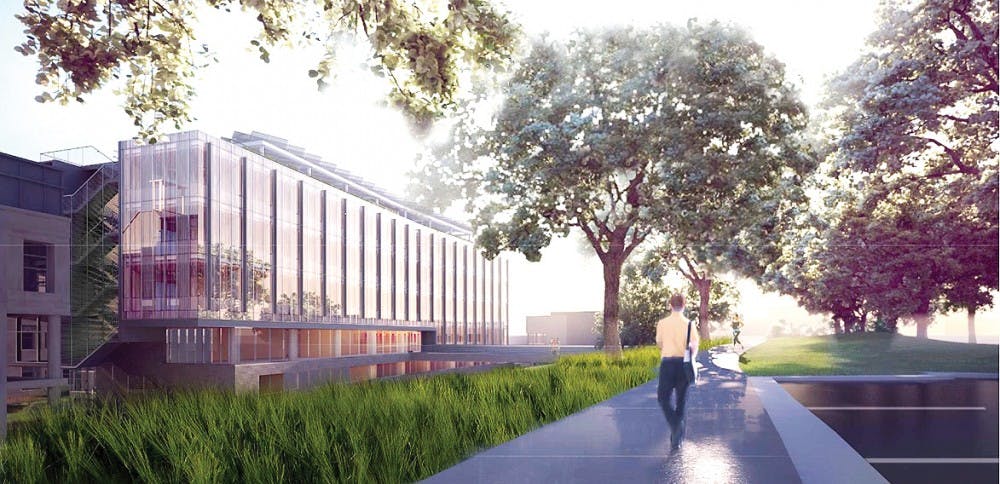A new building for the Nicholas School of the Environment will soon be the most eco-friendly structure on campus.
The $36.2 million Duke Environment Hall, which was approved by the Board of Trustees Friday, is slated to begin construction Spring 2012 and will be completed November 2013. The 70,000 sq.-ft. addition to the Levine Research Center will house classrooms, study spaces and faculty offices, as well as a green roof and an environment-themed art gallery, said Project Manager Myron Taschuk. The hall is being designed by Payette, a leading architectural firm based in Boston.
Environment Hall will be certified as platinum under the Leadership in Energy and Environmental Design standards, Taschuk said. A platinum certification is the highest honor offered by LEED—an initiative administered by the United States Green Building Council that promotes sustainable construction and operations in the American building industry.
“Through achieving the platinum standard, we are striving to have the greenest building with the smallest possible carbon footprint,” Nicholas School Dean Bill Chameides said. “We also want to make a statement to our students, our alumni and people outside Duke that we’re serious about sustainability.”
Environment Hall will join the Smart Home as one of two buildings on campus to hold this title, though the hall is the first large-scale project at Duke to pursue platinum certification.
Among a long list of cutting-edge and environmentally-friendly features, Chameides emphasized several. Environment Hall will include solar voltaic panels as well as natural lighting and ventilation, which will greatly reduce the need for internal lighting and heating, he said. Students will be able to cultivate and experiment with different plants on the roof, which will a hold a larger and deeper volume of soil than standard green roofs. The building will also implement a grey-water system that will recycle rainwater for toilet flushing and irrigation.
Despite the high costs of constructing a LEED-platinum building, environmental features will reduce energy costs by about 50 percent when compared to non-LEED certified buildings, Executive Vice President Tallman Trask said.
The building will also feature a computerized monitoring system that will provide live updates of the building’s water and energy consumption, said Tavey Capps, environmental sustainability coordinator for Duke Sustainability. This will allow for Environment Hall patrons to monitor their energy consumption—a practice that is necessary to ensure sustainability post-construction. He added that the hall will also serve as a “living laboratory” where students and faculty will actively learn how to best utilize the facility’s sustainable infrastructure.
“[That system] will be a teaching tool in itself because we’ll be able to see exactly how our energy is being used and how we can improve our methods to become even more energy efficient,” Chameides added.
Sustainability Outreach Coordinator Casey Roe said the hall is part of the University’s larger climate-action plan. There are already 22 LEED-certified buildings on campus, most earning silver or gold certifications. Environment Hall’s LEED features will be a model for future University construction projects.
“Because Environment Hall is a LEED building, students will have the opportunity to learn about and acclimate to how energy-efficient buildings run,” Roe said. “[Students] want an easy choice to be sustainable. With LEED-certified buildings, they don’t have to go out of their way to practice sustainability.”
Additionally, Environment Hall will boast aesthetic features, Chameides said. There will be an environment-themed art exhibition, displaying both professional and student artwork in the interior and exterior of the building.
“The art gallery will let people know in a fundamental way what this building is about—how we think about and interact with the environment,” he noted. “We want to facilitate experiential learning that can exist outside of the classroom and complement what is being taught in courses.”
Correction: A previous version of this article noted that Duke has 13 LEED-certified buildings on campus. Duke has 22 LEED-certified buildings. In addition, the hall will begin construction May 2012 and will be completed November 2013, The Chronicle regrets the errors.
Get The Chronicle straight to your inbox
Signup for our weekly newsletter. Cancel at any time.

